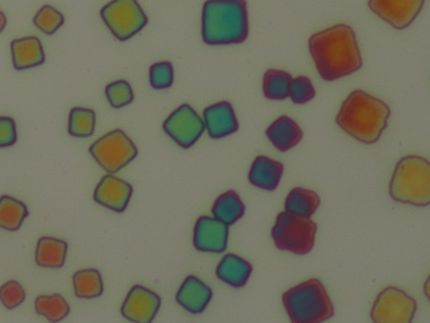Silicon nanoparticles instead of expensive semiconductors
Lomonosov MSU physicists found a way to "force" silicon nanoparticles to glow in response to radiation strongly enough to replace expensive semiconductors used in display business. According to Maxim Shcherbakov, researcher at the Department of quantum electronics of the Moscow State University and one of the authors of the study, the developed method considerably enhances the efficiency of nanoparticle photoluminescence.
The key term in the problem is photoluminescence -- the process, when materials irradiated by visible or ultraviolet radiation start to respond with their own light, but in a different spectral range. In the study, the material glows red.
In some of the modern displays, semiconductor nanoparticles, or the so-called quantum dots, are used. In quantum dots, electrons behave completely unlike those in the bulk semiconductor, and it has long been known that quantum dots possess excellent luminescent properties. Today, for the purposes of quantum-dot based displays various semiconductors are used, i.e. CdSe, etc. These materials are toxic and expensive, and, therefore, researchers have long been scrutinizing the far cheaper and much more studied silicon. It is also suitable for such use in all respects except one -- silicon nanoparticles vaguely respond to radiation, which is not appealing for optoelectronic industry.
Scientists all over the world were seeking to solve this problem since the beginning of the 1990's, but until now no significant success has been achieved in this direction. The breakthrough idea about how to "tame" silicon originated in Sweden, at the Royal Institute of Technology, Kista. A post-doctoral researcher Sergey Dyakov (a graduate of the MSU Faculty of Physics and the first author of the paper) suggested placing an array of silicon nanoparticles in a matrix with a non-homogeneous dielectric medium and cover it with golden nanostripes.
'The heterogeneity of the environment, as has been previously shown in other experiments, allows to increase the photoluminescence of silicon by several orders of magnitude due to the so-called quantum confinement,' says Maxim Shcherbakov. 'However, the efficiency of the light interaction with nanocrystals still remains insufficient. It has been proposed to enhance the efficiency by using plasmons (quasiparticle appearing from fluctuations of the electron gas in metals -- ed). Plasmon lattice formed by golden nanostripes allow to "hold" light on the nanoscale, and allow a more effective interaction with nanoparticles located nearby, bringing its luminescence to an increase.'
The MSU experiments with samples of "gold-plated" matrix with silicon nanoparticles made in Sweden brilliantly confirmed the theoretical predictions - the UV irradiated silicon for the first time shone bright enough to be used it in practice.
Original publication
Most read news
Original publication
S. A. Dyakov, D. M. Zhigunov, A. Marinins, M. R. Shcherbakov, A. A. Fedyanin, A. S. Vorontsov, P. K. Kashkarov, S. Popov, M. Qiu, M. Zacharias, S. G. Tikhodeev, and N. A. Gippius; "Optical properties of silicon nanocrystals covered by periodic array of gold nanowires"; Phys. Rev. B; 2016
Topics
Organizations
Other news from the department science

Get the chemical industry in your inbox
By submitting this form you agree that LUMITOS AG will send you the newsletter(s) selected above by email. Your data will not be passed on to third parties. Your data will be stored and processed in accordance with our data protection regulations. LUMITOS may contact you by email for the purpose of advertising or market and opinion surveys. You can revoke your consent at any time without giving reasons to LUMITOS AG, Ernst-Augustin-Str. 2, 12489 Berlin, Germany or by e-mail at revoke@lumitos.com with effect for the future. In addition, each email contains a link to unsubscribe from the corresponding newsletter.


























































